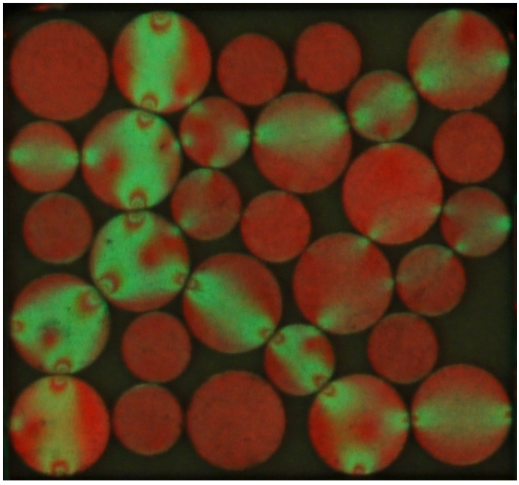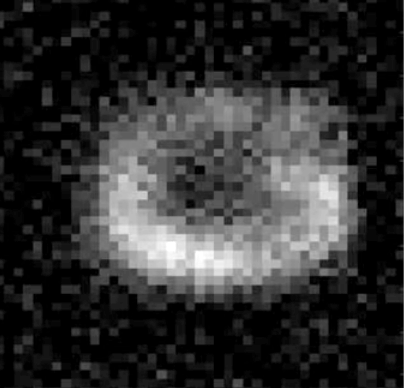Imaging photoelastic samples
In the previous section we explain the different ways to make a photoelastic sample. In this section, we will show you the different ways to image it considering the optical, dynamical and geometrical constraints you can have, and considering what you want to measure.
Using the transmission photoelasticity method:
In the most favorable case, you have optically access to both sides of the sample and you can then have light going through it from a polarised source to a cross-polarised camera. In this case, you can use the transmission photoelasticity method. This section presents the method and answers basic questions like: * Should I use a circular or a linear polarizer? * Should I add a quarter-wave plate? * How to orient the whole thing and check that I did it properly?
This is the most simple case so even if you do not use this method, we strongly suggest you to clearly understand it before going further.

Using the reflection photoelasticity method:
When the sample is optically accessible from one side only because au the loading mechanism for example, the transmission method cannot be used anymore. In this case, the sample must be both lit and imaged from the same side. This means the other side, whether it is the back of the particle or anything on the non-accessible side, must be reflective. So the light is reflected on the back of the sample and goes through it two times before being caught by the camera. More details about this method are given here.
Using different wavelengths:
To make photoelastic measurements only monochromatic light is enough even if polychromatic light can permit to get a more beautiful picture. This means that the sample can be lit and imaged with polarized light of a given wavelength. So other wavelengths can be used for other purposes like detecting the sample geometry, position, and orientation. For example, in the figure below extracted from this article, red light is used to localize the particles while green one is used to measure the photoelastic response. More details about how to use different wavelengths when imaging photoelastic samples are given here.

Using the terahertz photoelasticity method:
One of the main drawbacks of optical photoelasticimetry is that it is only doable for quasi-2D transparent materials. However, very recently, it has been shown that photoelasticimetry can also be performed using polarised teraHertz waves. These waves can go through optically non-transparent materials and could permit to image stresses in 3D. In this section we give the main principles of this method and how to implement it. Still, this is cutting-edge research so the processes presented here are much more complicated to use than any other presented in this wiki.

[